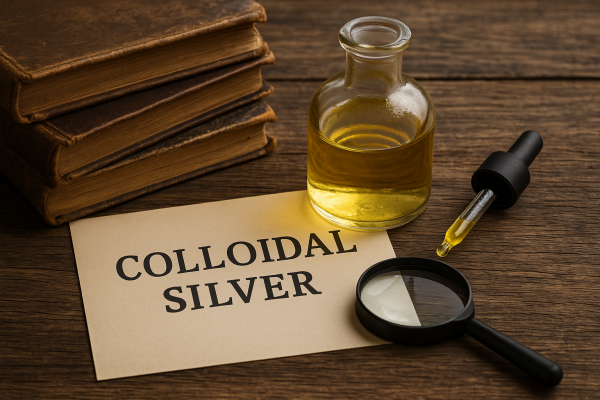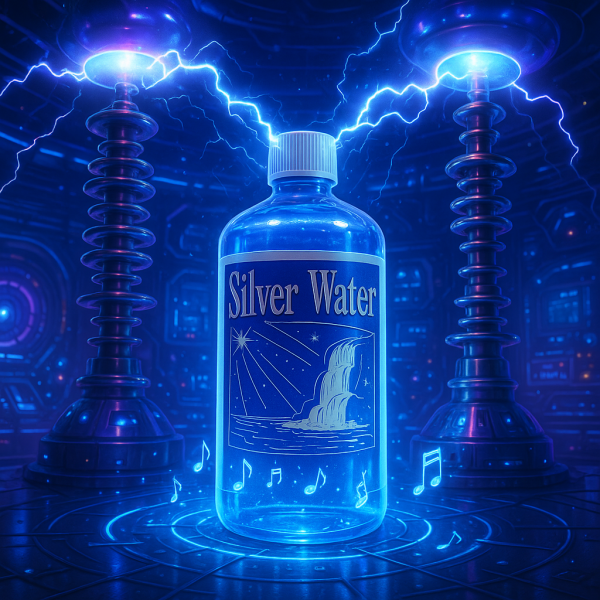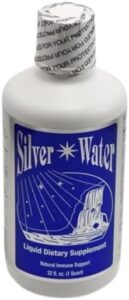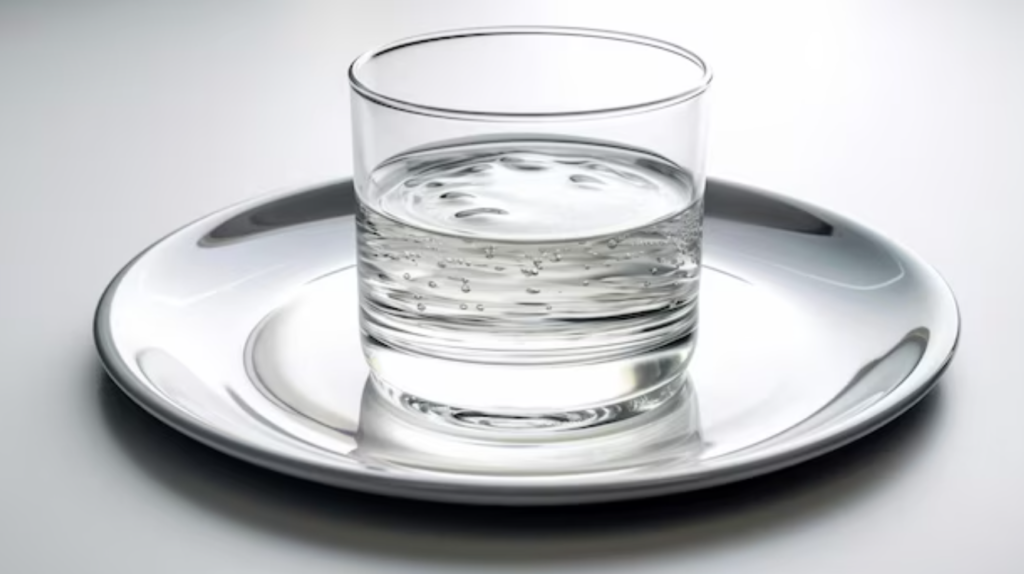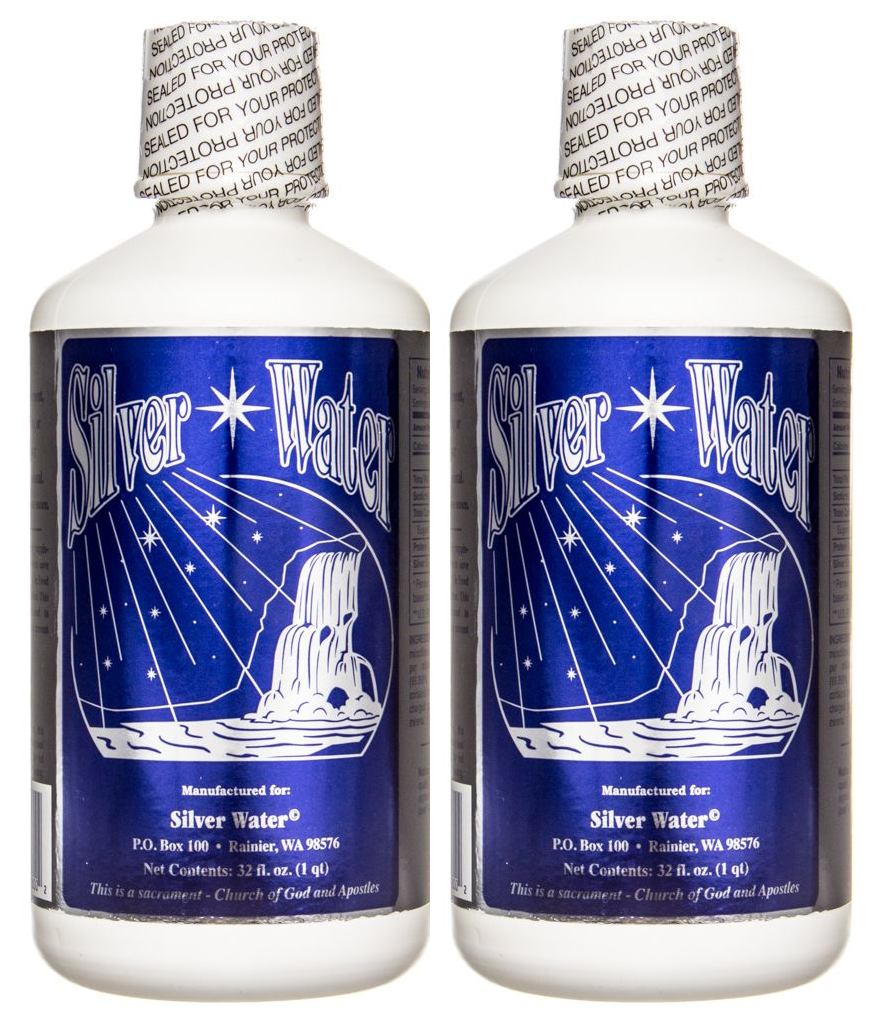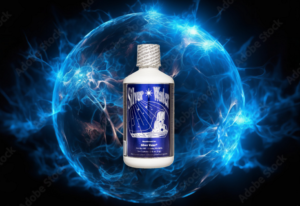Silver has been used as medicine since before medicine had a name. Long before Louis Pasteur “discovered” germs, people understood that silver protected them from disease. They didn’t know about bacteria, but they knew silver worked—and they revered it. That’s why it was thought to ward off “evil spirits.” What were those? Today, we’d call them pathogens.
Silver was used in utensils, drinking vessels, bandages, and even breathing masks. Up until a few decades ago, every licensed doctor carried some form of silver in their bag. Newborn babies? By law, silver was dripped into their eyes to prevent blindness from maternal infections. That’s how important silver was to human health.
But now? The FDA says you’re not allowed to even say silver can help you. You can own it. You can drink it. You can sell it. But don’t you dare claim it might do something beneficial. And if the FDA has their way, silver could be completely banned for sale.
So, before that happens, let me tell you why my Silver Water isn’t just another bottle of so-called “colloidal silver.” It’s something entirely different. And if you’re going to use silver for your health, you deserve the real story.
The Ugly Truth About Most Colloidal Silvers
Here’s how 99% of the colloidal silver sold online is made:
- Someone takes a couple of silver wires and drops them in a glass of water.
- They connect the wires to a tiny power supply—a battery charger, essentially.
- To make the electricity flow better, they add salt (which spikes the ppm reading, but has nothing to do with the actual silver content).
- They zap the water for about an hour.
- What do they get? A weak solution of ionic silver—not colloidal, despite what the label says.
And then they turn around and market this like it came out of some pristine lab, slapping words like “pharmaceutical grade” or “high ppm” all over it to justify outrageous prices.
But let me make this clear:
- There is no such thing as pharmaceutical grade silver. That’s marketing nonsense.
- Silver nitrate is toxic. If it’s in your bottle, you’re drinking poison.
- Protein-enhanced silver? Silver and water are both inorganic. If there’s protein in it, you’re not just buying a fake—you’re putting mystery meat into your bloodstream.
- Colored colloidal silver? Pure silver in water is clear. If your “colloidal silver” is yellow, green, or murky, something’s wrong. They’ve added something that doesn’t belong—maybe sugar, salt, or protein—to artificially boost the ppm.
And speaking of ppm, here’s a red flag: If a company is bragging about 500, 5,000, or even 50,000 ppm of silver, run the other way. Water simply can’t hold that much silver. What they’re really selling you is a slurry of dissolved junk designed to trick a cheap ppm meter.
The Contradiction No One Talks About
Have you noticed that these same silver sellers also want to sell you a kit so you can make your own “colloidal silver” at home? Let’s get real.
If it’s as amazing as they claim, why are they selling it for $100 a gallon while also telling you that you can make it yourself for 2 cents a quart?
It’s because the truth is this: That’s exactly what it cost them to make it in their kitchen.
They’ve duped the public into believing they’re buying lab-grade medicine when all they’re getting is backyard science.
What Makes My Silver Water Different
Here’s where I come in.
I don’t use salt. I don’t use silver nitrate. I don’t use kitchen gadgets or battery chargers.
My Silver Water is made using original Tesla technology, harnessing a custom-built lightning generator that fractures silver atoms on a truly atomic level. I use 1.2 million volts of Tesla lightning and 99.99999% pure silver bars which creates ultra-fine particles to make my Silver Water.
Then, using precise Rife frequencies, to the tune of B-flat, I infuse the water with healing vibrational patterns to amplify its biological compatibility.
This isn’t some DIY project. The manufacturing facility would cost over $500,000 to build—and that’s if you could even find authentic Tesla equipment and replicate the exact specs I use.
The process is expensive and painstaking. But it creates something no one else can replicate:
A colloidal silver solution, clear as mountain spring water, molecularly small enough to reach the inner workings of your cells, and so effective, yet safe to drink as healthy alternative drinking water.
Real Power Means Real Caution
Because my Silver Water is so powerful, I don’t recommend using more than 3 ppm for internal use. And I don’t just say that to sound humble—it’s because that’s all you’ll ever need. You can drink as much as you want. Do not attempt to do so with other colloidal silvers.
Other colloidal silvers boast about high ppm levels, they think about quantity, not quality. But healing happens at the molecular level, and my process delivers active particles in a size and structure your body can actually use.
We do manufacture a 10 ppm version for sterilization and industrial-grade use, but personally, I wouldn’t drink it, not because it’s dangerous, but because you simply don’t need that much.
How Do You Spot Fake Colloidal Silver?
Here’s your checklist:
- ✅ Clear liquid? Good.
- ❌ Yellow, green, or cloudy? Toss it.
- ❌ Claims of “high ppm” beyond 20? Fraud.
- ❌ Mentions of proteins or pharmaceutical grade? Run.
- ❌ Comes with a “make your own” kit? You’re drinking something made with a battery or phone charger and a hope.
My Silver Water Is in a Class of Its Own
You can’t make it in your kitchen. You can’t find it in your local store. And no one else has been able to duplicate it—not even close.
Why? Because it’s not just colloidal silver. It’s Tesla-energized, frequency-infused, atomically fragmented, and produced with precision and care.
This is Silver Water. Not the trend. Not the hype.
And I make it for those who want something that actually works.
